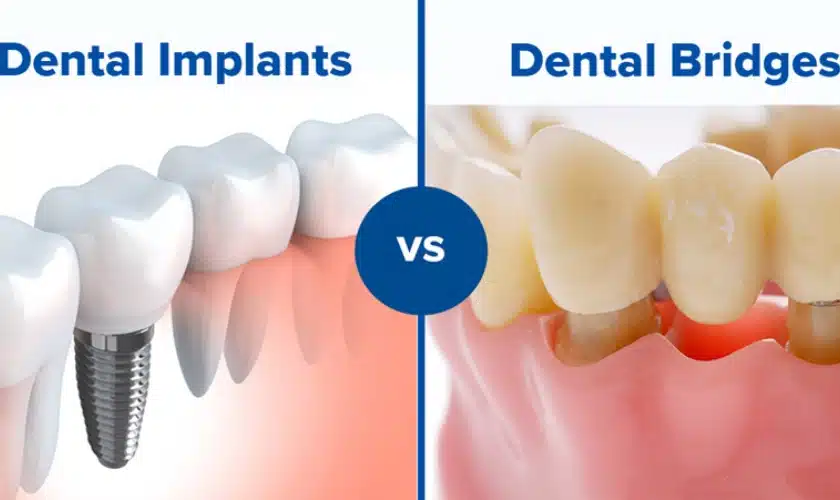Dental Sense Things To Know Before You Get This
Dental Sense Things To Know Before You Get This
Blog Article
Indicators on Dental Sense You Should Know
Table of ContentsNot known Factual Statements About Dental Sense Get This Report about Dental SenseWhat Does Dental Sense Do?The Ultimate Guide To Dental Sense
are clinical tools operatively dental implanted into the jaw to recover an individual's capacity to eat or their appearance. They give assistance for artificial (fake) teeth, such as crowns, bridges, or dentures. When a tooth is lost as a result of injury or disease, an individual can experience complications such as rapid bone loss, defective speech, or changes to eating patterns that result in discomfort.Oral dental implant systems include an oral implant body and oral implant joint and may likewise include a joint addiction screw. Dental implant vs bridge. The oral implant body is operatively put in the jawbone in area of the tooth's root. The dental implant joint is typically attached to the dental implant body by the abutment fixation screw and expands via gum tissues into the mouth to sustain the attached synthetic teeth
(https://disqus.com/by/dentalsense1/about/)Framework of The Oral Implant System picking oral implants, speak to your dental service provider about the potential advantages and threats, and whether you are a prospect for the treatment. Points to consider: Your total health and wellness is an important aspect in figuring out whether you are a great candidate for oral implants, the length of time it will take to heal, and the length of time the implant might remain in place.
Smoking may impact the recovery procedure and reduce the long-term success of the implant. The healing process for the implant body may take numerous months or longer, throughout which time you commonly have a momentary joint instead of the tooth. the dental implant treatment: Carefully comply with the dental health guidelines offered to you by your oral company.
Dental Sense for Dummies
Implant failure can lead to the demand for one more operation to take care of or replace the dental implant system. Restores the capacity to eat Restores aesthetic look Assists keep the jawbone from diminishing because of bone loss Preserves the health of the bordering bone and gums Assists keep adjacent (neighboring) teeth secure Enhances top quality of life Damage to bordering all-natural teeth throughout dental implant positioning Injury to the surrounding cells throughout surgical treatment, such as sinus opening Injury during surgery (for example, crack of bordering jawbone) Inadequate feature, such as really feeling like the teeth do not bite together typically An experience that the tooth hangs or twisting in position arising from a joint screw loosening up Implant body failure (looseness of the dental implant body) due to systemic infection, which may be more probable in people with unrestrained diabetes mellitus as a result of neighborhood infection in bone and gums supporting the implant body due to delayed recovery, which might be a lot more likely in individuals that smoke Trouble cleansing the periodontals around the dental implant, causing bad oral hygiene Neglected gum disease Post-surgical numbness as a result of nerve impingement or damages Constantly alert health care service providers and imaging service technicians that you have dental implants before any kind of magnetic vibration imaging (MRI) or x-ray procedures.
FDA is not familiar with any type of negative events reported for MRI or x-ray treatments with dental implants. Oral implants systems are typically constructed from materials that adhere to global consensus criteria of the International Company for Standardization (ISO) or ASTM International. These standards have information of what makes a safe product.

An oral implant is a structure that changes a missing out on tooth. With screw-like devices, the specialist inserts a dental implant right into the jawbone, and it acts as a support for a fabricated tooth, called a crown.
The Single Strategy To Use For Dental Sense
Some individuals are not eligible for oral implant surgical procedure. It is for oral doctors to operate on people with: intense illnessuncontrollable metabolic diseasebone or soft tissue condition or infectionIf these problems are solved, an individual can have the surgical procedure. In, dental cosmetic surgeons avoid running on people with: If people with any one of the above go through dental implant surgical procedure, there is a higher danger of the dental implant stopping working.

Dental implant surgical treatment is a personalized procedure. It's not the same for everybody. However the complying with gives a basic summary of what you can anticipate your dental expert, oral surgeon, periodontist or prosthodontist to do: Put the dental implant surgically. Give you time to recover. Affix the article and last crown, bridge or denture.
Next, your surgeon will thoroughly position the dental implant into your jaw. If your implant is near the front of your mouth, your dental practitioner will make a pop over to these guys short-term tooth for you to use until you heal.
Dental Sense Fundamentals Explained
Your provider can inform you what to anticipate in your situation. During the recovery phase, your jawbone must fuse to the oral implant. This process, called osseointegration, is crucial for security and lasting success. This procedure can take anywhere from 3 to 9 months. In some cases, it may take much longer.
As soon as your implant heals, your dentist can affix the abutment (small connector post) and your final repair (crown, bridge or denture). This normally takes concerning one hour to finish and may require a second minor surgical procedure. You should not feel any type of pain throughout your dental implant procedure since your service provider will certainly make use of medication to numb your gums.
Report this page